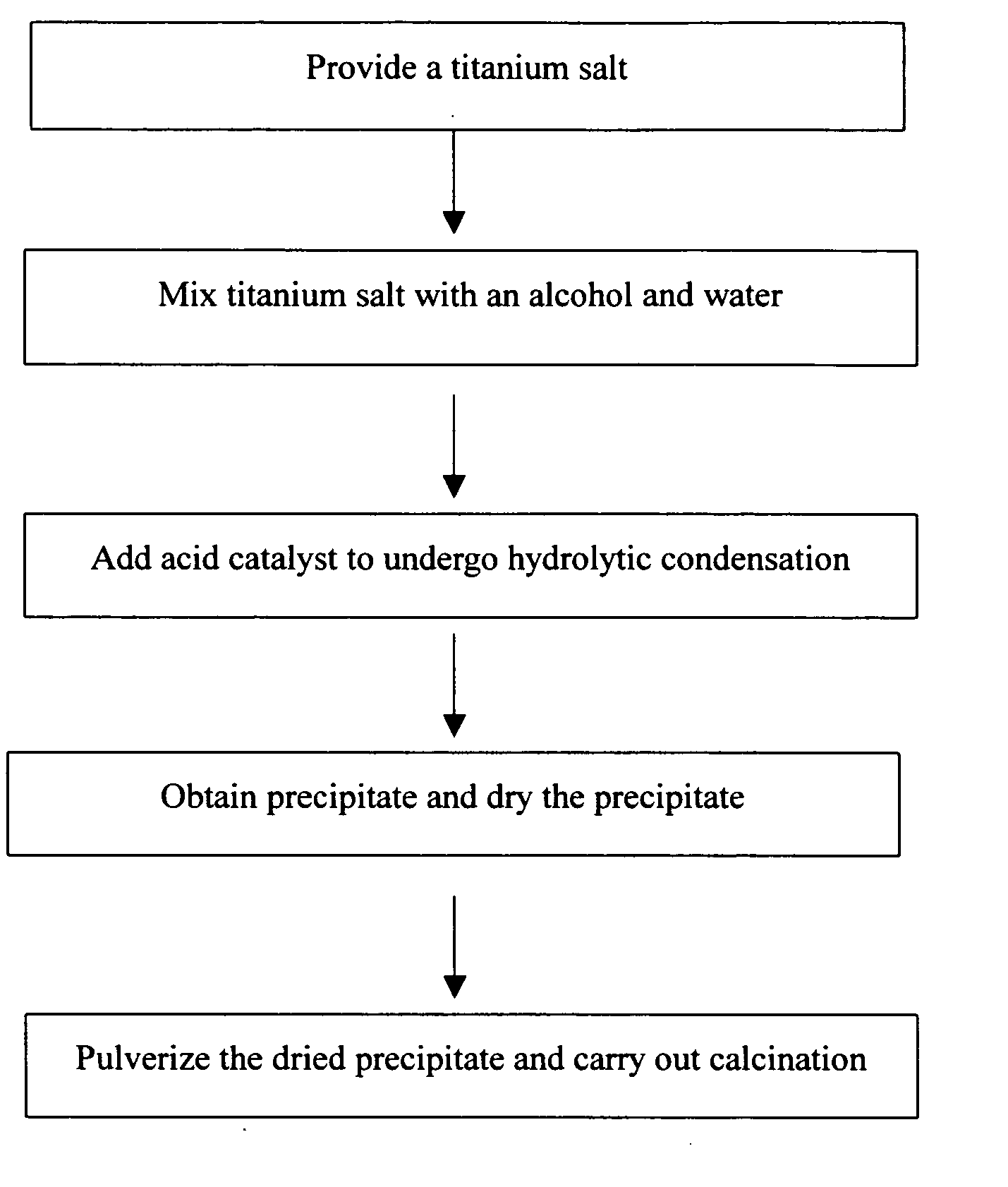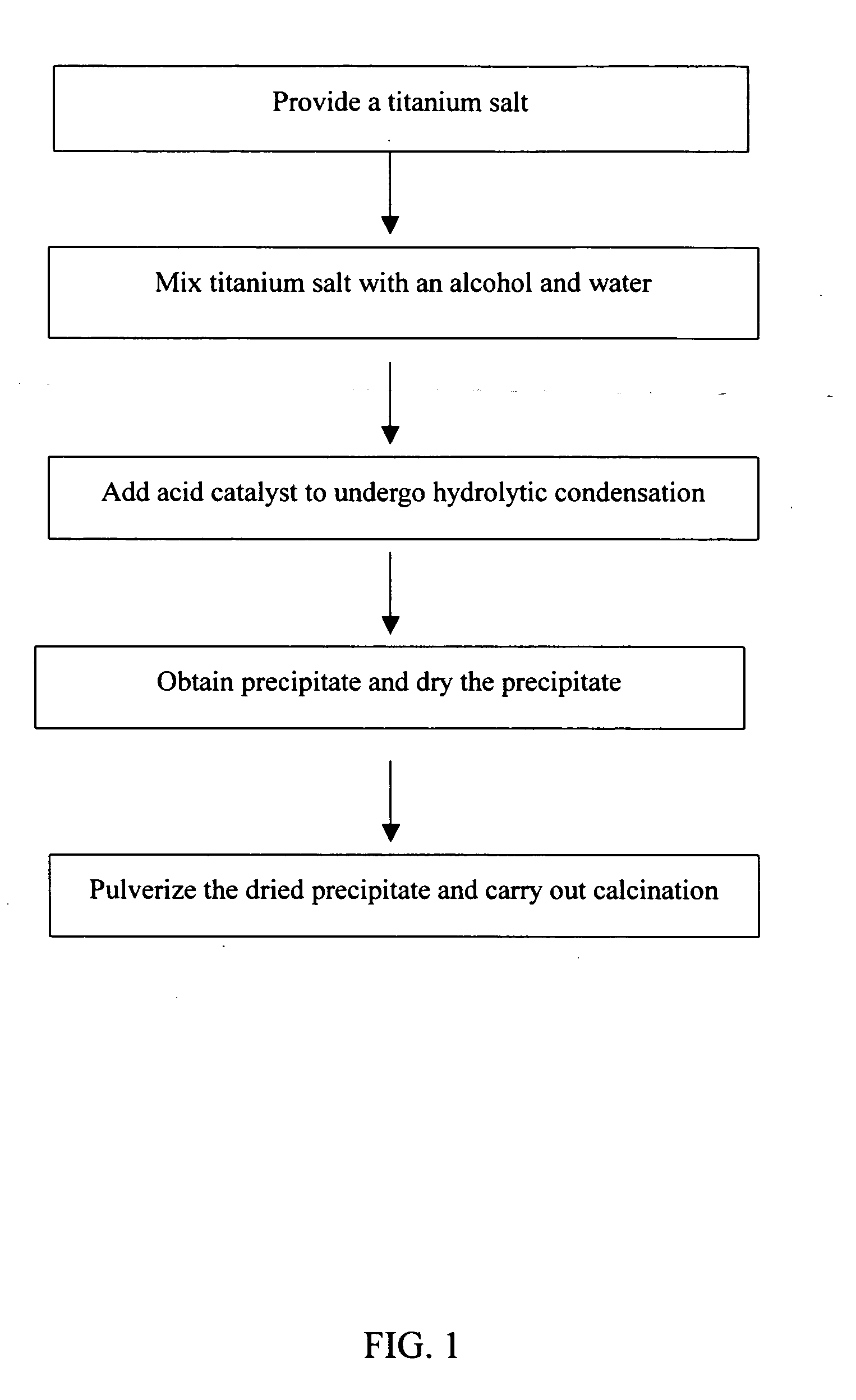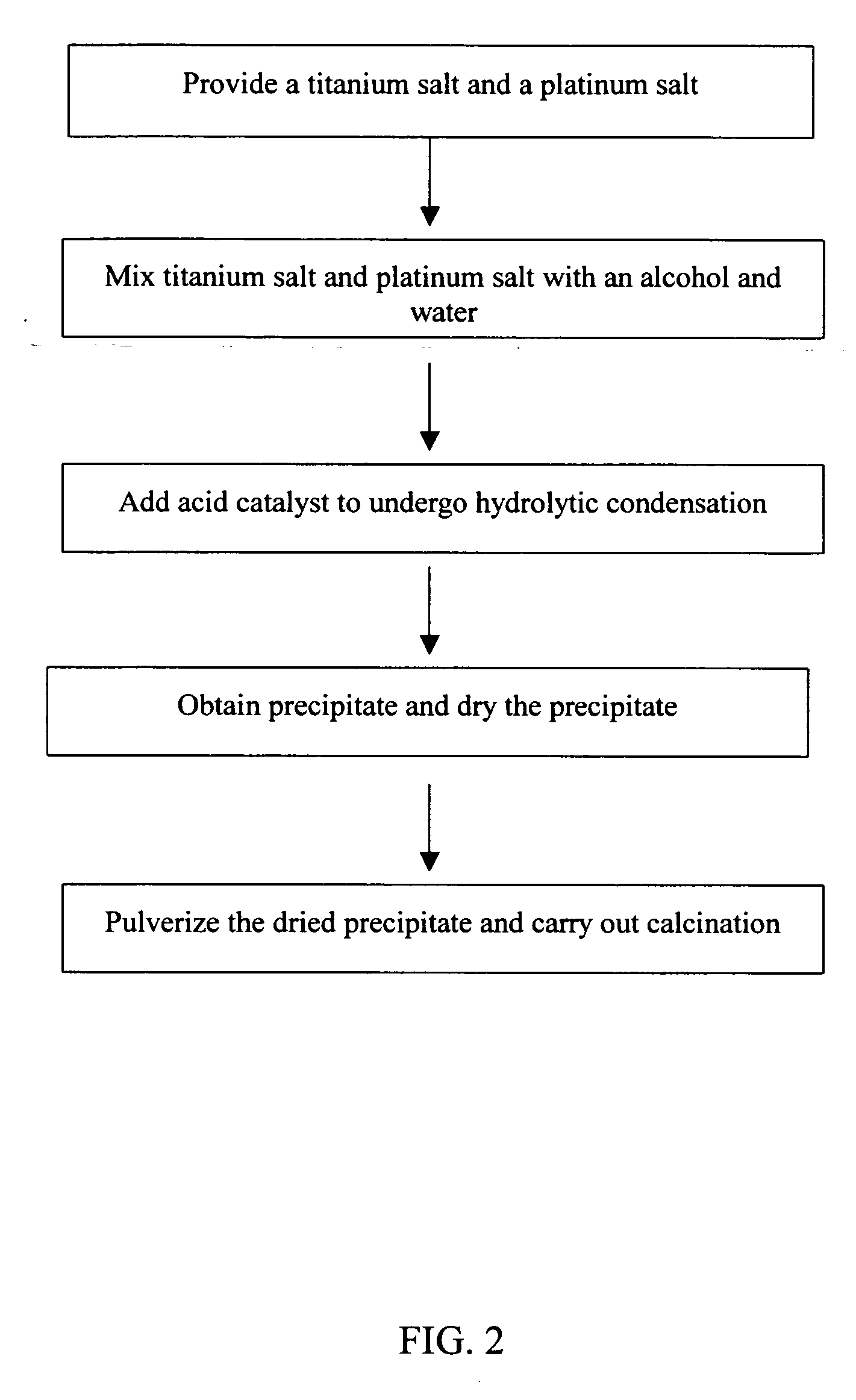Visible-light-activated photocatalyst and method for producing the same
a technology of visible light and photocatalyst, which is applied in the direction of physical/chemical process catalysts, titanium compounds, metal/metal-oxide/metal-hydroxide catalysts, etc., can solve the problems of skin pathology, expensive equipment, and harmful to humans, and achieve simple and feasible processes, enhance the use efficiency of solar energy, and increase the application of photocatalyst
- Summary
- Abstract
- Description
- Claims
- Application Information
AI Technical Summary
Benefits of technology
Problems solved by technology
Method used
Image
Examples
example 1
Preparation of Visible-Light-Activated Titanium Dioxide Photocatalyst
[0032] Take 0.05 mole of tetra(n-butoxyl) titanium and slowly pipette it into 4° C., 70 ml anhydrous alcohol to prepare clear tetra(n-butoxyl) titanium ethanol solution. Take 20 ml of DI water and add it into 20 ml anhydrous alcohol to make ethanol aqueous solution. Mix the tetra(n-butoxyl) titanium ethanol solution and the ethanol aqueous solution for 1 hour and then add in 4 ml of nitric acid (70%) as acid catalyst. Mix the reactants to undergo hydrolytic condensation for 3 hours. Put the resulting precipitate into an oven to dry under 110° C. for 2 hours. Pulverize the dried precipitate into powder. Finally calcine the powder by progressively raising the temperature at the rate of 1° C. / min up to 300° C. and maintaining at that temperature for 10 hours.
[0033] The crystalline pattern of the resulting titanium dioxide photocatalyst as shown by XRD graph in FIG. 4 is mixed anatase-brookite phase. Its absorbance d...
example 2
Preparation of Visible-Light-Activated Titanium Dioxide Photocatalyst Containing Platinum Oxide
[0034] Take 0.1 mole of tetra(n-butoxyl) titanium and slowly pipette it into 140 ml anhydrous alcohol to prepare clear tetra(n-butoxyl) titanium ethanol solution. Take 40 ml of DI water and add it into 40 ml anhydrous alcohol to make ethanol aqueous solution. Take platinum ammonium nitrate in an amount according to the desired loading and add it into the aforesaid ethanol aqueous solution. Mix the tetra(n-butoxyl) titanium ethanol solution and the platinum-containing ethanol aqueous solution for 1 hour and then add in 8 ml of nitric acid (70%) as acid catalyst. Mix the reactants to undergo hydrolytic condensation for 3 hours. Put the resulting precipitate into an oven to dry under 110° C. Pulverize the dried precipitate into powder. Finally calcine the powder by progressively raising the temperature at the rate of 1° C. / min up to 300° C. and maintaining at that temperature for 10 hours.
[...
example 3
Preparing Visible-Light-Activated Titanium Dioxide Photocatalyst Containing Platinum Oxide with Commercial Titanium Dioxide
[0036] Prepare platinum salt solution according to the desired loading by dissolving (Pt(NH4)4(NO3)2) in 100 ml of pure water. Place 10 g of titanium dioxide powder bought on the market (UV100) in the platinum-containing aqueous solution and mix for 30 minutes. Dry the solution under 110° C. Pulverize the resulting lump and then calcine the powder by progressively raising the temperature at the rate of 1° C. / min up to 300° C. and maintaining at that temperature for 10 hours.
[0037] The resulting titanium dioxide photocatalyst contains 1% platinum (Pt / Ti). Its crystalline pattern as shown in FIG. 4 is anatase, the same as UV100. Its absorption spectrograph is as shown in FIG. 5, indicating the modified photocatalyst absorbs visible light where the absorption effect gets enhanced as the loading of platinum increases. The light absorption ability of the photocatal...
PUM
| Property | Measurement | Unit |
|---|---|---|
| temperature | aaaaa | aaaaa |
| temperature | aaaaa | aaaaa |
| grain size | aaaaa | aaaaa |
Abstract
Description
Claims
Application Information
 Login to View More
Login to View More - R&D
- Intellectual Property
- Life Sciences
- Materials
- Tech Scout
- Unparalleled Data Quality
- Higher Quality Content
- 60% Fewer Hallucinations
Browse by: Latest US Patents, China's latest patents, Technical Efficacy Thesaurus, Application Domain, Technology Topic, Popular Technical Reports.
© 2025 PatSnap. All rights reserved.Legal|Privacy policy|Modern Slavery Act Transparency Statement|Sitemap|About US| Contact US: help@patsnap.com



